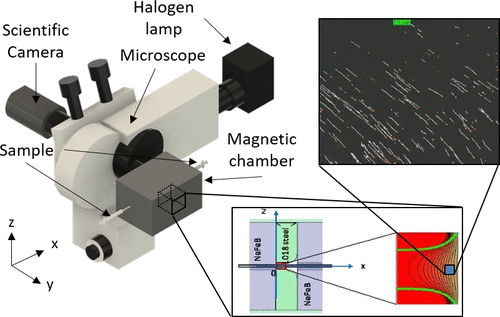当前位置:
X-MOL 学术
›
Anal. Chem.
›
论文详情
Our official English website, www.x-mol.net, welcomes your feedback! (Note: you will need to create a separate account there.)
Quantification of the Mean and Distribution of Hemoglobin Content in Normal Human Blood Using Cell Tracking Velocimetry.
Analytical Chemistry ( IF 7.4 ) Pub Date : 2020-01-07 , DOI: 10.1021/acs.analchem.9b04302 James Kim 1 , Jenifer Gómez-Pastora 1 , Christopher J Gilbert 2 , Mitchell Weigand 1 , Nicole A Walters 1 , Eduardo Reátegui 1 , Andre F Palmer 1 , Mark Yazer 3 , Maciej Zborowski 4 , Jeffrey J Chalmers 1
Analytical Chemistry ( IF 7.4 ) Pub Date : 2020-01-07 , DOI: 10.1021/acs.analchem.9b04302 James Kim 1 , Jenifer Gómez-Pastora 1 , Christopher J Gilbert 2 , Mitchell Weigand 1 , Nicole A Walters 1 , Eduardo Reátegui 1 , Andre F Palmer 1 , Mark Yazer 3 , Maciej Zborowski 4 , Jeffrey J Chalmers 1
Affiliation

|
The current clinical method for detecting anemia focuses on measuring the concentration of hemoglobin (Hb) in blood. However, recent developments in particle tracking algorithms and the understanding of the relationship between Hb and magnetism has enabled the quantitative measurement of the Hb content in a single red blood cell, RBC, based on magnetophoretic mobility. To further explore this relationship, 22 human blood samples obtained from 17 healthy volunteers were analyzed by the cell tracking velocimetry system, and the calculated Hb concentration from these measurements was compared to the values measured by UV-visible spectrophotometry, the standard method for measuring Hb in clinical laboratories. The results show close correlations between the mean of the spectrophotometric and magnetophoretic methods; however, single cell analysis with the magnetophoretic mobility method allows further elucidation of the distribution of Hb concentration within RBCs from a donor sample to be determined. Histograms of these magnetophoretic mobility distributions indicate that the fraction of RBCs that are below the bulk Hb concentration that defines anemia varies not only from donor to donor but also in the same donor over time. Consistent with a variable fraction below the anemic Hb concentration, the distribution around the mean has a large range. Previous studies have indicated that RBCs lose Hb during ex vivo storage; however, it is not known if this variability in the distribution of Hb content is a function of the age of the RBCs in a donor, suggesting a variable rate in RBC production between donors, or variability in available iron at the time of RBC formation. We suggest our cell tracking velocimetry system can reveal more information regarding this matter.
中文翻译:

使用细胞跟踪测速仪对正常人血液中血红蛋白含量的平均值和分布进行定量。
当前用于检测贫血的临床方法着重于测量血液中血红蛋白(Hb)的浓度。但是,粒子跟踪算法的最新发展以及对Hb与磁性之间关系的理解使得能够基于磁致动性对单个红细胞RBC中的Hb含量进行定量测量。为了进一步探讨这种关系,通过细胞跟踪测速系统分析了从17名健康志愿者那里获得的22份人体血样,并将这些测量值计算出的Hb浓度与通过UV-可见分光光度法测量的Hb浓度值进行了比较。在临床实验室。结果表明,分光光度法的平均值与磁热法之间存在密切的相关性。然而,用磁致动性方法进行单细胞分析可以进一步阐明供体样品中红细胞中血红蛋白浓度的分布。这些磁泳运动性分布的直方图表明,低于RBC的总体Hb浓度(定义贫血)的比例不仅随供体的不同而不同,而且同一时间的供体也随时间变化。与低于贫血Hb浓度的可变分数一致,均值周围的分布范围较大。先前的研究表明,RBCs在离体储存过程中会丢失Hb。然而,尚不知道这种Hb含量分布的变化是否是供体中RBC年龄的函数,这表明供体之间RBC产生速率的变化,或在RBC形成时可用铁的变化。
更新日期:2020-01-08
中文翻译:

使用细胞跟踪测速仪对正常人血液中血红蛋白含量的平均值和分布进行定量。
当前用于检测贫血的临床方法着重于测量血液中血红蛋白(Hb)的浓度。但是,粒子跟踪算法的最新发展以及对Hb与磁性之间关系的理解使得能够基于磁致动性对单个红细胞RBC中的Hb含量进行定量测量。为了进一步探讨这种关系,通过细胞跟踪测速系统分析了从17名健康志愿者那里获得的22份人体血样,并将这些测量值计算出的Hb浓度与通过UV-可见分光光度法测量的Hb浓度值进行了比较。在临床实验室。结果表明,分光光度法的平均值与磁热法之间存在密切的相关性。然而,用磁致动性方法进行单细胞分析可以进一步阐明供体样品中红细胞中血红蛋白浓度的分布。这些磁泳运动性分布的直方图表明,低于RBC的总体Hb浓度(定义贫血)的比例不仅随供体的不同而不同,而且同一时间的供体也随时间变化。与低于贫血Hb浓度的可变分数一致,均值周围的分布范围较大。先前的研究表明,RBCs在离体储存过程中会丢失Hb。然而,尚不知道这种Hb含量分布的变化是否是供体中RBC年龄的函数,这表明供体之间RBC产生速率的变化,或在RBC形成时可用铁的变化。



























 京公网安备 11010802027423号
京公网安备 11010802027423号